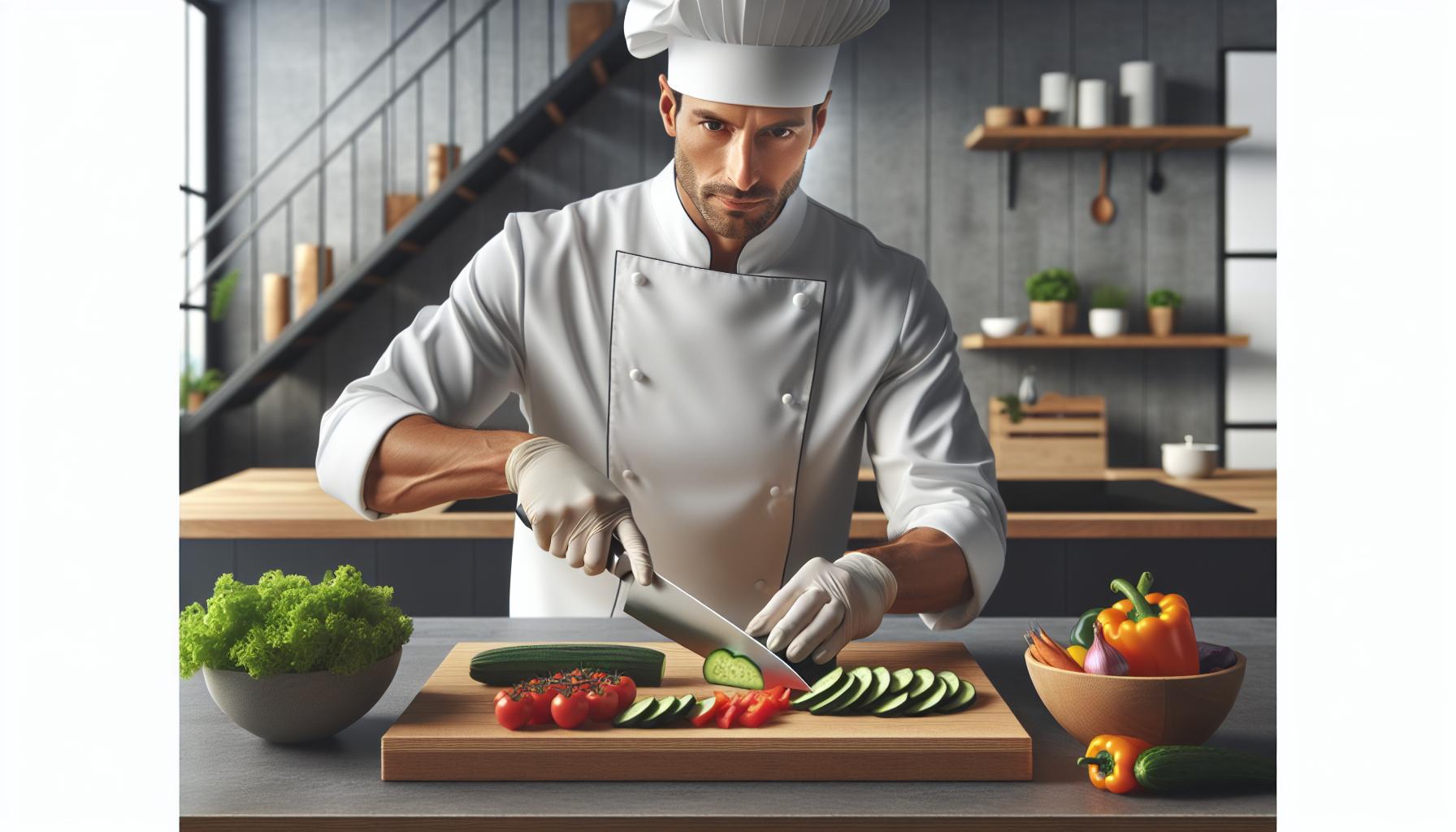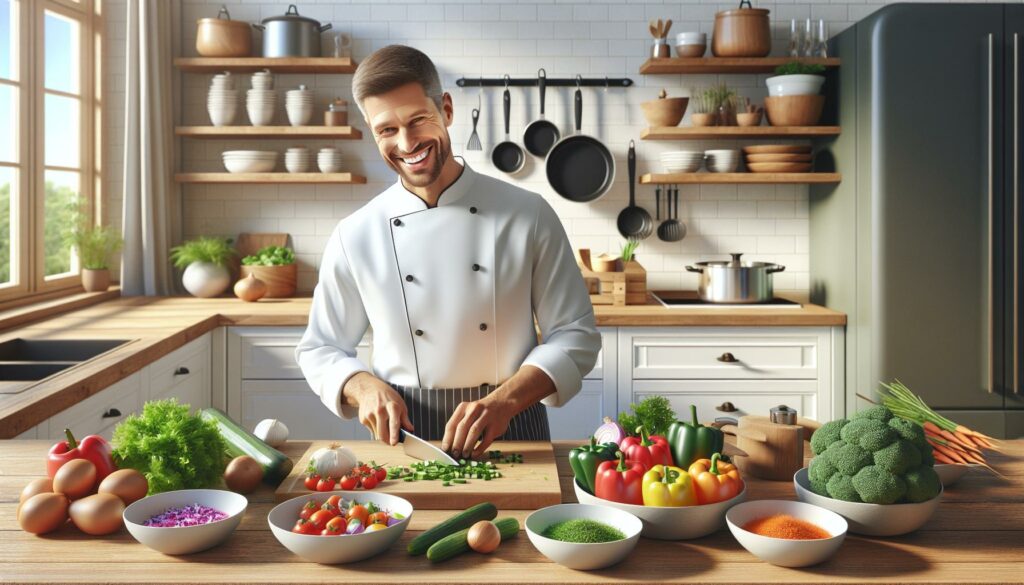Mastering the art of cooking doesn’t have to feel like decoding ancient hieroglyphics. Whether you’re a kitchen novice who burns water or an aspiring chef ready to level up your culinary game a comprehensive cooking techniques book can transform your kitchen adventures from chaotic experiments into confident creations.
Think of a cooking techniques book as your personal kitchen mentor available 24/7 without the Gordon Ramsay-style criticism. These culinary bibles break down complex methods into digestible steps teaching everything from basic knife skills to advanced sauce-making secrets. They’re packed with professional insights tips and tricks that’ll make you feel like you’ve attended culinary school without the hefty tuition fees.
Cooking Techniques Book
Proper knife handling forms the foundation of efficient cooking. Professional chefs employ specific grips for different cutting tasks: the pinch grip for precise cuts, the handle grip for heavy-duty chopping. Basic knife cuts include julienne (matchstick-sized), brunoise (tiny cubes), and chiffonade (ribbon-like strips of leafy greens).
Temperature Control
Temperature management impacts food texture, flavor, and safety. Different cooking methods require specific heat ranges:
- Searing: 400-450°F for optimal caramelization
- Braising: 300-325°F for tender meats
- Roasting: 350-400°F for even cooking
- Simmering: 185-205°F for gentle cooking
Mise en Place
Mise en place streamlines cooking through organized preparation. This system includes:
- Measuring ingredients before cooking starts
- Arranging tools in order of use
- Preparing cutting boards with specific zones
- Setting up cooking stations with needed equipment
Basic Sauce Making
Understanding mother sauces creates versatile cooking options. Core techniques include:
- Roux preparation (equal parts flour butter)
- Emulsification methods
- Stock reduction
- Sauce thickening procedures
Heat Application Methods
Different cooking methods produce distinct results:
| Method | Temperature | Best Used For |
|---|---|---|
| Sauté | Medium-high | Vegetables, thin cuts |
| Braise | Low-slow | Tough meats |
| Broil | High | Quick browning |
| Steam | 212°F | Delicate foods |
- Base seasoning during preparation
- Adjusting flavors during cooking
- Final seasoning before serving
- Salt application timing based on ingredient type
Basic Kitchen Equipment and Tools

A well-equipped kitchen forms the foundation for executing professional cooking techniques. The right tools enable precise preparation while quality cookware ensures consistent results.
Must-Have Utensils
Professional kitchens rely on specific utensils for efficient food preparation. A chef’s knife serves as the primary cutting tool for chopping vegetables slicing meat. Measuring cups spoons enable accurate portion control for both wet dry ingredients. Mixing bowls in multiple sizes accommodate ingredient preparation blending. Essential tools include:
- Wooden spoons spatulas for stirring sauces sautéing
- Colanders strainers for draining pasta rinsing produce
- Peelers graters for vegetable fruit preparation
- Tongs whisks for handling food beating ingredients
- Kitchen scissors thermometers for precise cutting temperature monitoring
- 10-inch 12-inch sauté pans for searing browning
- 2-quart 4-quart saucepans for sauces soups
- 6-quart stockpot for pasta stews broths
- Cast iron skillet for high-heat cooking searing
- Sheet pans for roasting baking
- Dutch oven for braising slow cooking
| Cookware Type | Heat Conductivity | Best Used For |
|---|---|---|
| Stainless Steel | Moderate | General cooking |
| Cast Iron | High | Searing meats |
| Copper | Excellent | Temperature control |
| Non-stick | Low | Delicate foods |
Understanding Heat Methods and Temperature Control

Heat methods and temperature control form the foundation of successful cooking techniques. Mastering these elements enables precise cooking control and consistent results across various dishes.
Dry Heat Cooking Methods
Dry heat cooking methods use direct heat transfer without moisture. Roasting occurs at temperatures between 350-450°F (175-230°C), creating brown exteriors and tender interiors in meats or vegetables. Broiling applies intense overhead heat at 500-550°F (260-288°C) to quickly cook thin cuts of meat or fish. Sautéing involves cooking food in a pan over medium-high heat at 350-375°F (175-190°C) with minimal oil. Grilling combines direct heat at 400-450°F (204-232°C) for searing with indirect heat zones for thorough cooking. Deep-frying requires oil temperatures of 350-375°F (175-190°C) to achieve crispy exteriors while maintaining moist interiors.
Moist Heat Cooking Methods
Moist heat cooking utilizes water-based liquids to transfer heat into food. Steaming maintains temperatures at 212°F (100°C) to preserve nutrients while cooking vegetables, fish or dumplings. Poaching keeps liquids between 160-180°F (71-82°C) to gently cook delicate items like eggs or fish. Braising combines initial searing at 400°F (204°C) with slow cooking in liquid at 300°F (149°C) to tenderize tough cuts of meat. Stewing maintains temperatures at 200-205°F (93-96°C) for even heat distribution throughout ingredients. Simmering occurs between 185-205°F (85-96°C) producing clear stocks soups from vegetables bones or seafood.
Knife Skills and Food Preparation

Professional knife skills form the foundation of efficient cooking preparation. Mastering proper knife techniques ensures safety, precision, and consistency in food preparation while reducing kitchen injuries and food waste.
Proper Knife Handling
A chef’s grip combines power and precision through the pinch grip method. The thumb and forefinger pinch the blade near the handle while the remaining fingers wrap around the handle. The opposite hand forms a “claw” position, with fingertips tucked under and knuckles guiding the blade. A stable cutting board prevents slipping by placing a damp paper towel underneath. The knife stays aligned with the forearm, maintaining a straight wrist position to reduce strain during extended cutting sessions.
Basic Cutting Techniques
Professional cutting techniques include slice, dice, chop, mince, julienne, brunoise, chiffonade and batonnet. The slice cut creates uniform pieces by drawing the knife through food in a single fluid motion. Dicing produces uniform cubes starting at 1/4 inch, while mincing creates tiny pieces through repeated chopping motions. Julienne cuts form matchstick shapes measuring 1/8 inch by 1-2 inches. Chiffonade creates ribbon-like strips from leafy vegetables through a rolling technique. Each cut serves specific culinary purposes from presentation to ensuring even cooking times.
Seasoning and Flavor Development
Seasoning transforms basic ingredients into memorable dishes through strategic flavor enhancement. Professional chefs master the art of seasoning by understanding ingredient combinations, timing, and layering techniques.
Herbs and Spices
Fresh herbs deliver bright, clean flavors while dried spices provide deep, concentrated notes. Common culinary herbs include basil, thyme, rosemary, sage, oregano, parsley, cilantro, and mint. Essential spices encompass black pepper, cumin, coriander, paprika, turmeric, cinnamon, nutmeg, and cardamom. Storage conditions affect potency: dried spices maintain flavor for 6 months in airtight containers away from heat and light, while fresh herbs last 5-7 days when wrapped in damp paper towels. Proper measurement ratios include:
| Herb/Spice Type | Fresh to Dried Conversion | Optimal Storage Temperature |
|---|---|---|
| Leafy Herbs | 3:1 (fresh:dried) | 35-40°F |
| Ground Spices | N/A | 65-70°F |
| Whole Spices | N/A | 65-70°F |
Building Flavor Layers
Flavor development requires strategic ingredient addition at specific cooking stages. Base aromatics like onions, carrots, celery create foundational flavors during initial cooking. Dried spices bloom in oil at medium heat for 30-60 seconds to release essential oils. Fresh herbs divide into two categories: hardy herbs (rosemary, thyme) add during cooking, tender herbs (basil, cilantro) finish dishes. Deglazing with wine or stock incorporates browned bits into sauces. Salt appears at multiple stages: light seasoning at start, taste adjustment during cooking, final seasoning before serving. Acid elements like citrus juice or vinegar brighten completed dishes.
Recipe Reading and Measurement Skills
Recipe comprehension begins with understanding standardized measurement abbreviations: tsp (teaspoon), tbsp (tablespoon), c (cup), oz (ounce), lb (pound), g (gram), ml (milliliter).
Converting measurements requires familiarity with basic equivalents:
| Standard Measurement | Metric Equivalent |
|---|---|
| 1 teaspoon | 5 ml |
| 1 tablespoon | 15 ml |
| 1 cup | 237 ml |
| 1 pound | 454 g |
| 1 ounce | 28.35 g |
Professional recipes follow a specific format:
- Title indicates the dish name ingredients yield
- Ingredient lists specify exact quantities measurements
- Method sections detail step by step instructions
- Equipment requirements note specific tools needed
- Temperature settings include both Fahrenheit Celsius
Reading techniques enhance recipe execution:
- Scan entire recipe before starting
- Identify active cooking preparation times
- Note ingredient modifications substitutions
- Mark critical temperature timing points
- Cross reference techniques within recipe steps
Measurement accuracy impacts recipe success:
- Level dry ingredients in measuring cups
- Read liquid measurements at eye level
- Use kitchen scales for precise weights
- Maintain separate tools for wet dry ingredients
- Follow temperature specifications exactly
- Flour (120g per cup)
- Sugar (200g per cup)
- Butter (227g per cup)
- Chocolate (170g per cup)
- Nuts (150g per cup)
Plating and Food Presentation
Professional plating transforms ordinary dishes into visually appealing masterpieces through specific techniques and artistic principles. Understanding color composition creates visual interest by combining complementary or contrasting food colors on the plate. Texture variation adds depth through combinations like crispy elements with smooth purees or tender meats with crunchy garnishes.
Height builds dramatic presentation through strategic stacking of components:
- Base layers establish foundation with starches or vegetables
- Center proteins create focal points
- Vertical garnishes add architectural elements
- Sauce applications frame the composition
Key plating guidelines enhance visual appeal:
- Place odd numbers of elements for natural balance
- Create white space around components
- Position focal ingredients slightly off-center
- Apply sauces with precision using squeeze bottles
- Garnish with fresh herbs microgreens or edible flowers
Temperature considerations affect plating execution:
| Component | Ideal Plating Temperature |
|---|---|
| Hot items | 140-165°F (60-74°C) |
| Cold items | 35-40°F (2-4°C) |
| Room temp | 68-72°F (20-22°C) |
Essential plating tools produce professional results:
- Ring molds shape uniform portions
- Offset spatulas ensure smooth sauce spreading
- Tweezers place delicate garnishes
- Squeeze bottles control sauce application
- Clean cloths maintain plate edges
- Position sauce elements first
- Add warm components quickly
- Layer cold items last
- Apply delicate garnishes
- Wipe plate edges clean
Cooking From Ordinary to Extraordinary
A comprehensive cooking techniques book is more than just a collection of recipes – it’s a gateway to culinary mastery. By providing detailed guidance on essential skills from knife handling to professional plating these books empower home cooks to create restaurant-quality dishes with confidence.
Whether someone’s learning the basics of temperature control practicing proper seasoning techniques or mastering the art of presentation a reliable cooking techniques book serves as an invaluable companion in the kitchen. It’s an investment that continues to deliver value as cooking skills evolve from basic to advanced.
The journey to becoming a skilled cook starts with understanding fundamental techniques and a good cooking techniques book lights the way forward. With practice dedication and the right guidance anyone can transform their cooking from ordinary to extraordinary.

